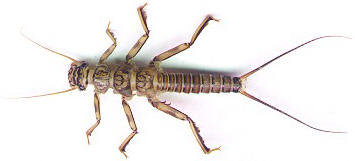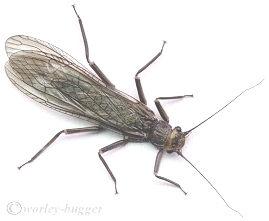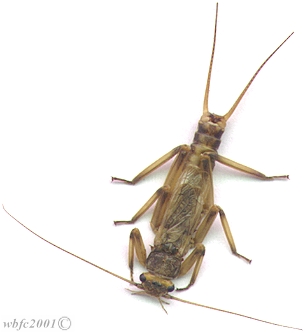|
|
| The Yakima River has a diverse variety of Stone-Flies living within it's waters, but the Short-Wing Stone is by far the most prolific. The hatch of thesee summer stoneflies typically begin during the month of July, depending on water temperatures. The male of the species is the first to appear along the banks of the Yakima, hiding under rocks and other debris that has collected along the river. The emergence of the Short Wing Stone can last well into the month of September, we have even seen them continue throughout the fall months of October. |
The Yakima trout key in quickly on these highly energetic Stones and feed
heavily on the nymphs. Migration of these Stones
takes place primarily at night as they
emerge from the river edges. The Yakima is usually running at summer flows
at the
time of this emergence and you will find the fish holding tight along the banks, feeding on the
nymphs
that are migrating to the shore. The metamorphic change from nymph to
adult happens very quickly. The Female stone (top right)
is easy to distinguish, a big clear wing envelopes the length of her
body. Migration of these Stones
takes place primarily at night as they
emerge from the river edges. The Yakima is usually running at summer flows
at the
time of this emergence and you will find the fish holding tight along the banks, feeding on the
nymphs
that are migrating to the shore. The metamorphic change from nymph to
adult happens very quickly. The Female stone (top right)
is easy to distinguish, a big clear wing envelopes the length of her
body. |
 The male stone (bottom)
is quite smaller, but much more energetic.
At times throughout their lives they may be blown or fall on to the
water's surface. The male stone (bottom)
is quite smaller, but much more energetic.
At times throughout their lives they may be blown or fall on to the
water's surface.When they do, the males scurry across the water very quickly. When fishing your imitations, twitching your Stone-Fly pattern will at times provoke violent takes from the Yakima's wild trout. Keep your slack from the line and a hook up is usually emanate. If you like fishing big bugs this is a great time to fish the Yakima River. Water temperatures in a normal year are usually in the mid-60's and the trout metabolism is running high. Fishing big dries can be fun and exciting and will take some of the bigger fish this river has to offer. |

"The nymph in the attachment is Claassenia sabulosa, which we in the stonefly business refer to as the "shortwing stone". Males of this species emerge during the summer (appx. July) and hide under rocks and logs along the stream margins. The males are short winged and can run rapidly across the water surface. They often do this in the evening hours when the long winged females begin to emerge. Adults are quite large, almost as large as Pteronarcys species." Dr. Bill Stark |
|
Name |
Order | Family | Genus | Species | Body Color | Wing Color | Emergence |
|
Short Wing |
Plecoptera | Perlodidae | Claassenia sabulosa | Californica | Yellow/Brown | Gray | Evening |